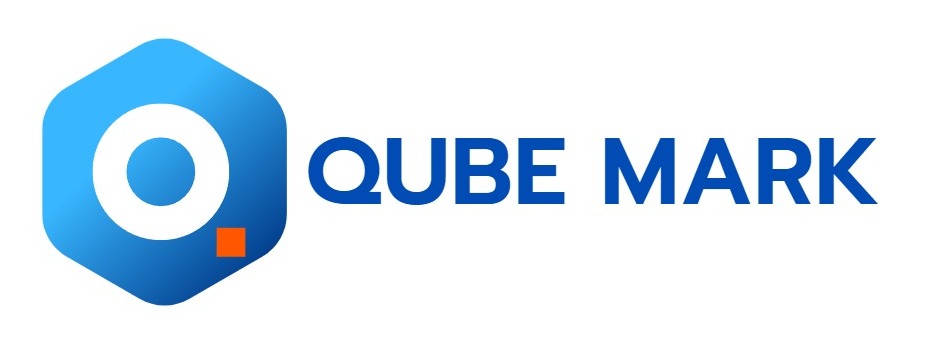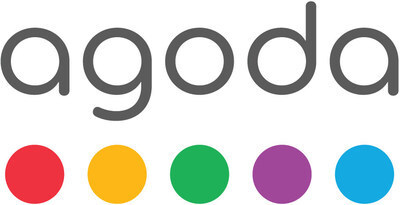NEW YORK, Feb. 6, 2025 -- Report on how AI is driving market transformation - The global dynamic random access memory (DRAM) market size is estimated to grow by USD 258.8 billion from 2025-2029, according to Technavio. The market is estimated to grow at a CAGR of 21.7% during the forecast period. Growth of smart cities is driving market growth, with a trend towards increasing demand from automotive segment. However, various upcoming and improved technologies with price benefits poses a challenge. Key market players include Advantech Co. Ltd., Alliance Memory Inc., Apacer Technology Inc., Elite Semiconductor Microelectronics Technology Inc., Etron Technology Inc., Fujitsu Ltd., GSI Technology Inc., Infineon Technologies AG, Integrated Silicon Solution Inc., Intel Corp., Kingston Technology Co. Inc., Micron Technology Inc., Nanya Technology Corp., Powerchip Semiconductor Manufacturing Corp., Samsung Electronics Co. Ltd., Shenzhen Longsys Electronics Co. Ltd., SK hynix Co. Ltd., Texas Instruments Inc., Transcend Information Inc., and Winbond Electronics Corp..
Key insights into market evolution with AI-powered analysis. Explore trends, segmentation, and growth drivers- View Free Sample PDF
Dynamic Random Access Memory (DRAM) Market Scope | |
Report Coverage | Details |
Base year | 2024 |
Historic period | 2019 - 2023 |
Forecast period | 2025-2029 |
Growth momentum & CAGR | Accelerate at a CAGR of 21.7% |
Market growth 2025-2029 | USD 258.8 billion |
Market structure | Fragmented |
YoY growth 2022-2023 (%) | 19.9 |
Regional analysis | APAC, North America, Europe, South America, and Middle East and Africa |
Performing market contribution | APAC at 72% |
Key countries | South Korea, US, China, Taiwan, Japan, Germany, Mexico, UK, India, and France |
Key companies profiled | Advantech Co. Ltd., Alliance Memory Inc., Apacer Technology Inc., Elite Semiconductor Microelectronics Technology Inc., Etron Technology Inc., Fujitsu Ltd., GSI Technology Inc., Infineon Technologies AG, Integrated Silicon Solution Inc., Intel Corp., Kingston Technology Co. Inc., Micron Technology Inc., Nanya Technology Corp., Powerchip Semiconductor Manufacturing Corp., Samsung Electronics Co. Ltd., Shenzhen Longsys Electronics Co. Ltd., SK hynix Co. Ltd., Texas Instruments Inc., Transcend Information Inc., and Winbond Electronics Corp. |
Market Driver
The DRAM market is experiencing significant growth due to increasing demand from various sectors. DDR3 and DDR2 architecture are currently popular in semiconductor memory applications for personal computers, smartphones, ADAS systems, smartwatches, workstations, and servers. The market is also driven by trends in generative AI, streaming, gaming, autonomous vehicles, and datacenter architecture. Key players like Micron Technology, AMD, and Intel are leading the market with power-saving capabilities and advanced technology. The datacenter sector, driven by cloud computing, AI, and high-performance computing (HPC), is a major consumer of server DRAM. Mobile DRAM is in high demand for mobile devices, including 5G smartphones and tablets. Emerging memory technologies, such as DDR5 and DDR4, are projected to disrupt the market with their high-speed connectivity and high density memory capabilities. Semiconductor manufacturers are focusing on wafer input and commercial relationships with OEMs and mobile device makers to meet the growing demand. The market is also influenced by international commerce, ICT infrastructure, and the Internet of Things. Per unit costs and processing technologies are crucial factors in the competitive landscape. The RAM industry is expected to continue its growth trajectory, driven by the increasing demand for electronic devices, wearable gadgets, and consumer goods. The semiconductor and handset industries are also major contributors to the market. In summary, the DRAM market is witnessing growth, driven by various sectors and applications, with key players focusing on advanced technology and power-saving capabilities to meet the increasing demand. The market is expected to continue its growth trajectory, driven by the proliferation of electronic devices, wearable gadgets, and consumer goods.
The DRAM market has experienced notable growth due to the increasing demand from the automotive industry. Advanced Driver Assistance Systems (ADAS) and self-driving vehicle technologies have become more complex, requiring larger memory capacity and higher bandwidth. In response, DRAM suppliers have introduced LPDDR4(X) chips with embedded error correction code (ECC) capabilities to cater to the safety-critical requirements of automotive applications. These chips operate at fast speeds while consuming minimal power, making them suitable for automotive use. They are designed with higher temperature ranges up to 125°C and AEC-Q100 qualification to meet stringent automotive standards such as ISO 26262. Intelligent memory solutions provide a reliable and efficient solution for the automotive industry's memory needs.
Request Sample of our comprehensive report now to stay ahead in the AI-driven market evolution!
Market Challenges
- The DRAM market is a dynamic and evolving industry, serving various sectors such as personal computers, smartphones, ADAS systems, workstations, servers, generative AI, and more. Semiconductor memory, specifically DRAM, plays a crucial role in these applications due to its high-speed data processing capabilities. Key players in this market include Micron Technology, Intel, AMD, and Samsung. Challenges in the DRAM market include architecture transitions from DDR3 to DDR4, power saving capabilities, and datacenter demand. Artificial intelligence, streaming, gaming, autonomous vehicles, and cloud computing are major growth areas. Semiconductor manufacturers face pressure to meet the demands of these sectors, with projections indicating continued growth in mobile devices, cloud computing, and high-performance computing. Operators, internet of things, 5G, and tablets/PCs/laptops are also driving the demand for DRAM. Technology advancements, such as DDR5 and DDR4, and data center architecture, are shaping the industry. Emerging memory technologies, like AI, machine learning, and big data, are also impacting the market. Semiconductor self-sufficiency, international commerce, high-speed connectivity, and high-density memory are additional factors influencing the DRAM market.
- DRAM currently dominates the memory market due to its widespread use in various devices. However, its position is under threat from emerging memory technologies. One such technology is Phase-change memory, a non-volatile random-access memory that offers faster data access and retention capabilities. Another contender is Resistive RAM, which boasts simpler fabrication and scalability below 10nm. Lastly, Magneto-resistive RAM uses nanoscale magnets to store information, providing faster access times and lower power consumption. These technologies, with their advanced features, are poised to challenge DRAM's market dominance.
Discover how AI is revolutionizing market trends- Get your access now!
This dynamic random access memory (dram) market report extensively covers market segmentation by
- Application
- Computers
- Mobile Devices
- Consumer Electronics
- Networking Devices
- Technology
- DDR2
- DDR3
- DDR4
- DDR5
- Geography
- APAC
- North America
- Europe
- South America
- Middle East And Africa
1.1 Computers- The global DRAM market has experienced a shift in demand due to the rise of mobile devices outpacing computer sales. With declining computer shipments in the post-PC era, the need for computer DRAM has decreased. Operating systems have become leaner, requiring less DRAM than earlier versions. For instance, Windows 8 had similar memory requirements as Windows 7. This trend has led DRAM suppliers to explore alternative growth drivers, such as mobile devices. However, the oversupply of DRAM units due to decreased computer sales has resulted in a decline in Average Selling Prices (ASPs), negatively impacting major players like SK HYNIX and Micron Technology. This situation is expected to challenge the growth of the computer DRAM segment in the forecast period.
Download a Sample of our comprehensive report today to discover how AI-driven innovations are reshaping competitive dynamics
Dynamic Random Access Memory (DRAM) is a semiconductor memory technology used in various electronic devices for data storage and processing. DRAM comes in different architectures such as DDR3 and DDR2. It is widely used in personal computers, smartphones, automotive Advanced Driver-Assistance Systems (ADAS), smartwatches, workstations, servers, and various ICT infrastructure applications. The market for DRAM is driven by the increasing demand for generative AI, artificial intelligence, machine learning, big data, datacenter construction, streaming, and bitcoin mining. Power saving capabilities are a crucial factor in the DRAM market, especially for mobile devices and datacenters. Home entertainment products like gaming consoles, GPUs, TVs, smart speakers, and set top boxes also utilize DRAM for enhanced performance.
The Dynamic Random Access Memory (DRAM) market refers to the semiconductor memory technology used in various electronic devices for temporary data storage. DRAM comes in different architectures such as DDR3 and DDR2, and is utilized in personal computers, smartphones, ADAS systems, smartwatches, workstations, servers, and more. The market is driven by the increasing demand for high-performance computing (HPC), artificial intelligence (AI), streaming, gaming, autonomous vehicles, and cloud services. DRAM is used in server DRAM for data centers and mobile DRAM for mobile devices. The technology is also employed in generative AI, machine learning, big data, ICT infrastructure, Bitcoin mining, gaming consoles, and home entertainment products. The DRAM industry is projected to grow due to the projections of semiconductor manufacturers, the emergence of new memory technologies, and the commercial relationships between OEMs and mobile device makers. DRAM chips, including graphics DRAM chips, are essential for processing technologies in various applications such as 3D games, high resolution movies, and ultra-thin notebooks. The market is also influenced by factors such as per unit costs, power saving capabilities, datacenter demand, and international commerce. The semiconductor industry and handset industry are major consumers of DRAM, with emerging memory technologies like DDR5 and DDR4 poised to disrupt the market.
1 Executive Summary
2 Market Landscape
3 Market Sizing
4 Historic Market Size
5 Five Forces Analysis
6 Market Segmentation
- Application
- Computers
- Mobile Devices
- Consumer Electronics
- Networking Devices
- Technology
- DDR2
- DDR3
- DDR4
- DDR5
- Geography
- APAC
- North America
- Europe
- South America
- Middle East And Africa
7 Customer Landscape
8 Geographic Landscape
9 Drivers, Challenges, and Trends
10 Company Landscape
11 Company Analysis
12 Appendix
Technavio is a leading global technology research and advisory company. Their research and analysis focuses on emerging market trends and provides actionable insights to help businesses identify market opportunities and develop effective strategies to optimize their market positions.
With over 500 specialized analysts, Technavio's report library consists of more than 17,000 reports and counting, covering 800 technologies, spanning across 50 countries. Their client base consists of enterprises of all sizes, including more than 100 Fortune 500 companies. This growing client base relies on Technavio's comprehensive coverage, extensive research, and actionable market insights to identify opportunities in existing and potential markets and assess their competitive positions within changing market scenarios.
Technavio Research
Jesse Maida
Media & Marketing Executive
US: +1 844 364 1100
UK: +44 203 893 3200
Email: media@technavio.com
Website: www.technavio.com/
This News is brought to you by Qube Mark, your trusted source for the latest updates and insights in marketing technology. Stay tuned for more groundbreaking innovations in the world of technology.









